ATARI-2600 question anyone?
When a byte is stored in the TIA HMP0 register, a fine position adjustment is applied to the coarse beam position. The Stella manual says the value can be anywhere from -8 to 7. Where -8 is (1000 binary) and 7 is (0111 binary) because the nibble is read as two's complement.
My issue is that I am having trouble getting the Sprite to render when any of the negative fine position values are applied. As a demo, observe the diagonal lines rendered for Sprite 0 as the result of HMOVE shifts by raster line. However when the value applied has an high bit of 1 (aka negative) the sprite disappears and there is nothing on that scan line. For comparison Sprite 1 renders as a straight line the length of the screen b/c no fine position is applied.
The code of the visible lines loop is as follows:
ScanLoop
REPEAT 10 ; wait to
nop ; get beam
REPEND ; arbitrarily near center
; All we do here is ++ the hi nibble in the Accumulator
; and apply it to HMP0 to adjust the fine position.
; QUESTION FOR READER: WHY DOESN'T THE SPRITE RENDER WHEN
; THE VALUE EQUATES TO A NEGATIVE VALUE (-7...-1?)
clc
adc #%00010000 ; Add (UI) '1' to high nibble in A
sta HMCLR ; Due diligence - clear all Motion values
sta HMP0 ; Set fine P0 Sprite pos to incremented value (*)
sta RESP0 ; set coarse position of P0 Sprite
sta RESP1 ; Set coarse position (only) of P1 Sprite
sta WSYNC ; Wait for next scanline
sta HMOVE ; Apply fine tweak
stx COLUBK ; Set the background color
dex ; decrement the scanline
bne ScanLoop
;(*)PS: Tried putting HMP0 after RESP's, didn't help
The project is for this code is here on teh githubs, and the project on the online Atari emulator 8bitworkshop is here.
As I understand, if a solution is provided, then the Sprite on the left will render on every line w/o break with the dot position two's complement bit-pattern.
